Flugesic, Flupirtine
- Introduction to Flugesic (Flupirtine)
- Composition and Active Ingredients
- Flupirtine Mechanism of Action
- Flupirtine Maleate Tablets Uses
- Off-Label and Investigational Uses of Flupirtine
- Dosage and Administration Guidelines
- Administration in Special Populations
- Use in Elderly Patients
- Pharmacokinetics in older adults
- Dose adjustment recommendations
- Monitoring requirements
- Use During Pregnancy and Breastfeeding
- Safety profile during pregnancy
- Animal study data and lack of human trials
- Breast milk excretion and lactation warnings
- Use in Pediatric Patients
- Lack of approval in children
- Safety concerns in adolescents
- Side Effects of Flugesic (Flupirtine)
- Common Side Effects
- Drowsiness and fatigue
- Dizziness and headache
- Nausea and gastrointestinal upset
- Serious and Less Common Side Effects
- Hepatotoxicity and liver enzyme elevation
- Allergic reactions and rash
- Muscle weakness and coordination issues
- Psychiatric effects (e.g., confusion)
- Warnings and Precautions
- Risk of liver damage with prolonged use
- Recommended liver function monitoring
- Avoidance of alcohol and other hepatotoxic substances
- Restriction to short-term use only
- Contraindications of Flugesic (Flupirtine)
- Drug Interactions with Flugesic
- Careful Administration and Monitoring
- Important Handling and Storage Precautions
- Overdose and Emergency Management
- Patient Counseling and Education
Introduction to Flugesic (Flupirtine)
Overview of Flugesic and its classification as a non-opioid analgesic
Flugesic is a medication that includes flupirtine as its ingredient—an opioid pain reliever that acts on the central nervous system to provide unique muscle relaxing and neuroprotective effects without affecting opioid receptors like traditional painkillers do to avoid the associated risks of opioid dependence or breathing difficulties. Its pain-relieving effect is believed to be due, to the opening of potassium channels (known as SNEPCOs) which regulate nerve activity and reduce the perception of pain by indirectly blocking NMDA receptors. This unique feature sets flupirtine apart, from pain relievers like NSAIDs and opioids making it valuable, for purposes such as ;
- Persistent discomfort in the muscles and skeletal structures.
- Neuropathic conditions
- Tension headaches
- Chronic pain conditions, like fibromyalgia and associated syndromes.

Historical background and regulatory status in various countries
Flupirtine was introduced for the first time, in Germany during the 1980s era. Praised as an advancement in pain relief without the use of opioids. With time passing it secured approval for sale in European nations along with regions, in Asia and Latin America. However, worries, about liver damage arose from usage.
Oversight bodies such, as the European Medicines Agency (EMA) examined market monitoring information. Consequently Flupirtine was only permitted for short-term usage typically limited to a maximum of 14 days, in regions. Regular monitoring of liver function is required while undergoing treatment.
Brand names and availability of Flupirtine globally
Flugesic is one of the brand names used to sell flupirtine, along with others, in the market.
- Katadolon is a medication that originates from Germany.
- Trancolong, a town located in India.
- Flupirex (Latin America)
- Flupigesic is commonly used in South Asia.
The availability of flupirtine related medications differs significantly based on choices, to each countries rules and regulations. In India and some African countries it is still recommended for managing mild to pain. Is frequently used alongside other treatments to boost effectiveness and reduce negative reactions.
Composition and Active Ingredients
Active pharmaceutical ingredient: Flupirtine maleate
Flugesic contains a substance called maleate which is known for its properties as a derivative of the triaminopyridine compound group. Flupirtine works by targeting specific neuronal potassium channels to provide pain relief and muscle relaxation while also offering protection to the nervous system. This compound is easily absorbed when taken orally and is processed by the liver before being eliminated through the kidneys. The structure of the compound aids, in stabilizing cell membranes in neurons to regulate pain without causing drowsiness or euphoria effects.

Available formulations and strengths
Flugesic is mainly created to be utilized as;
- Capsules containing 100 mg and 200 mg of maleate.
- Oral pills, in both extended release forms.
- Suspension is mostly used for children or older adults, in some regions.
These specific formulations have been designed to allow for dosages, in medical situations. Especially, for patients who cannot tolerate NSAIDs or should avoid taking opioids.
Inactive ingredients and excipients
Apart, from the component of the Flugesic medication product includes a mixture of additives to guarantee effectiveness in the body's absorption process and to maintain its stability for patients ease of use and adherence, to treatment regimen.
- Lactose monohydrate is commonly employed as a substance
- Microcrystalline cellulose is used to give structure to tablets.
- Povidone functions, as a binding agent.
- Magnesium stearate is used as a lubricant.
- Sodium starch glycolate boosts disintegration.
These components do not have any effects. Are essential, for maintaining the physical and chemical properties of the formulation.
Flupirtine + Paracetamol
Exploring treatment combinations such as Flupirtine and paracetamol has been a focus, on improving pain relief results and reducing side effects, from high dosages of medication used for pain management purposes.
- Managing pain after surgery
- Menstrual pains
- Dysmenorrhea pelvic pain syndrome
- Injuries related to tissues
The combined effect allows for pain relief by using two approaches. Acting on the central nervous system, with flupirtine and inhibiting COX on the periphery with paracetamol simultaneously. The use of this combination provides a range of effectiveness. Requires careful consideration due to the risk of liver damage in patients, with existing liver issues or those undergoing long-term treatment.

Flupirtine Mechanism of Action
Central nervous system activity as a selective neuronal potassium channel opener (SNEPCO)
Flupirtine works mainly by influencing the central nervous system as a Selective Neuronal Potassium Channel Opener (SNEPCO) setting it apart from traditional pain relievers with its unique mechanism of action. It helps stabilize the membrane potential of neurons by boosting the function of rectifying potassium channels in order to reduce excitation. This adjustment leads to the reduction of pathways, in specific areas involved in transmitting pain signals like;
The back part of the cord Thalamic clusters The regions, in the brain responsible, for processing pain signals. The result downstream is a decrease, in the transmission of nerve impulses, along pain pathways that helps alleviate both term and long-lasting pain sensations without altering regular sensory experiences.
NMDA receptor antagonism and its role in pain relief
Flupirtine does not affect potassium channels. Also has a subtle impact, on the N Methyl D aspartate (NMDA) receptor responsible for central sensitization and winds up, in chronic pain conditions without causing severe neuropsychiatric side effects often seen with direct NMDA antagonists. The suppression of excitatory transmission is mediated by NMDA receptors.
- Inhibits sensitization.
- Interrupting pain signals.
- Helps avoid the occurrence of pain sensitivity and sensitivity, to painful stimuli.
The combination of SNEPC, with NMDA modulation gives flupirtine a pain relief characteristic that's particularly beneficial, for neuropathic conditions when regular painkillers are not effective enough

Muscle relaxant properties
Apart, from its pain-relieving properties flupirtine also has muscle effects. This is particularly helpful in situations where there are muscle spasms or continuous muscle contractions like, in the cases;
The way flupirtine relaxes muscles is different, from muscle relaxants such as benzodiazepines because it doesn't act on the gamma-aminobutyric acid (GABA) system that they typically target. Inducing sedation or cognitive issues flupirtine works by adjusting the excitability of neurons, in the spinal and supraspinal regions to decrease muscle tension. This special characteristic boosts its value by enabling the management of pain related to muscle tightness while also keeping alertness and motor skills intact.
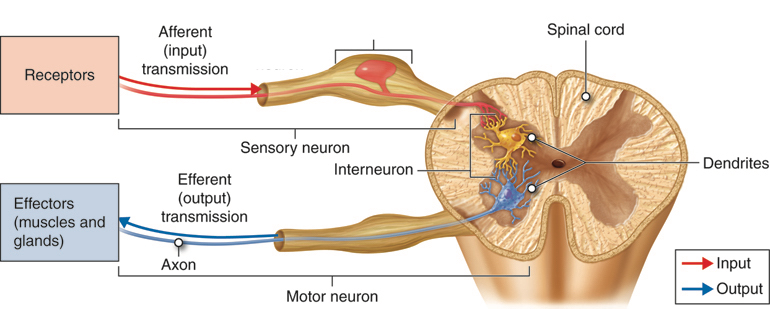
Flupirtine Maleate Tablets Uses
Treatment of acute and chronic pain conditions
Flupirtine maleate tablets are recommended for treating types of pain, both short-term and long-term conditions. Especially when regular painkillers, like NSAIDs or opioids, are not suitable or cause discomfort for the individual's system. The distinct mechanism of this compound which is different from opioids and NSAIDs, provides an approach, for alleviating pain without affecting prostaglandin levels or binding to receptors. Its wide range of healing applications encompasses;
- Intense pain resulting from an injury or trauma.
- Suffering from term pain due, to nerve damage or neurological conditions.
- Cases of pain, with causes are often referred to as idiopathic pain conditions.
Flupirtine maleates ability to effectively address both term and lasting pain situations establishes it as a practical choice, for comprehensive pain treatment approaches.
Musculoskeletal pain relief
One significant benefit of maleate is its effectiveness, in treating pain caused by various issues related to muscles and bones such as ligaments and tendons. Its ability to relax muscles and provide pain relief directly to the area makes it a valuable option for patients in need of relief, from conditions;
- Muscle pain and fibromyalgia conditions.
- Pain, in the back caused by issues.
- Neck arthritis .

Joint pain, due, to posture Flupirtines impact, on the potassium channels of nerve cells helps calm down spinal motor neurons and eases muscle tension and spasms effectively. It proves to be a treatment option for bouts of pain as well, as long-term muscle soreness.
Post-operative pain management
Flupirtine maleate is used to help with post surgery pain relief in cases where reducing opioid intake is important. During the recovery period, after surgery different types of pain, like inflammation-related pain nerve related pain, and physical pain are common.
- Flupirtine acts on these types of pain using methods that do not involve opioids.
- Improve the comfort of patients without using sedatives or causing euphoria.
- Encourage patients to start moving and engage in rehabilitation while staying vigilant. Minimize the chances of experiencing effects associated with opioids, like constipation and dependency while also avoiding issues.

Orthopedic surgeries and hernia repairs often require a combination of pain relief methods to ensure a recovery process; this is also the case, for procedures that prioritize multimodal analgesia for effective healing.
Pain associated with orthopedic and rheumatologic disorders
People suffering from lasting pain due, to bone and joint issues or arthritis typically need pain relief treatments for an extended period of time. When compared to nonsteroidal inflammatory drugs (NSAIDs) which can lead to complications like gastrointestinal bleeding and kidney problems Flupirtine maleate offers a safer option, for long-term use. Signs, within this group consist of;

- Managing pain, from osteoporosis and rheumatoid arthritis.
- Degenerative disc condition and spinal compression conditions
- Shoulder injuries such, as rotator cuff injuries and bursitis.
Flupirtine enhances both movement and overall well-being, in individuals, with term skeletal pain by adjusting how they perceive pain centrally and promoting muscle relaxation.
Off-Label and Investigational Uses of Flupirtine
Neuropathic pain treatment
Flupirtine has caught the attention of clinicians, for its effectiveness in treating pain – a type of pain caused by nerve damage or dysfunction that is difficult to manage with common treatments at first attempt due to its symptoms like burning or shooting sensations similar, to electricity running through the body tissues. Flupirtine mechanism mainly involves influencing potassium channels and suppressing NMDA receptors in the brain to help reduce patterns of nerve activity linked to neuropathic conditions. Off-label usage has been noted in situations, like;
- Continuing discomfort, after shingles Diabetes-related nerve damage, in the extremities.

- Issues related to radiculopathy and nerve root compression syndromes affecting nerve roots
Flupirtine's ability to be well tolerated and its lack of properties make it an attractive option, for individuals who are facing side effects, from standard anticonvsulsants or antidepressants.
Flupirtine Fibromyalgia
People suffering from fibromyalgia encounter pain, along with fatigue and sleep disruptions, in sleep without any signs of inflammation or structural issues causing them discomfort. Traditional pain relievers frequently prove ineffective because of the complicated neurochemical basis of this ailment Flupirtine has been investigated for its potential to alleviate symptoms in fibromyalgia by decreasing central excitability and reinstating neuronal stability Limited pilot studies and real-life stories, have shown;
- Lessened the severity of pain.
- Enhanced the sleep experience
- Muscle stiffness reduction.
Although it hasn't been officially sanctioned for this use yet flupirtine continues to grab attention in pain clinics that cater to disciplines as part of personalized treatment plans.\

Migraine and tension-type headache relief
The development of migraines and tension-type headaches involves heightened sensitivity, in the system and muscle tightness making flupirtine's dual function well-suited for these conditions. It not only targets the nerve-related inflammation associated with migraine initiation. Also offers relaxation to the skeletal muscles to alleviate tension, around the head. Flupirtine has displayed potential when used for purposes of minimizing how often migraines occur and how intense they are. Reducing the length of headache episodes. Alleviating muscle stiffness is linked to tension headaches. Compared to muscle relaxants its low sedative effects make it beneficial, for patients who need relief during the day.

Trigeminal neuralgia
Trigeminal neuralgia is known for causing pain that can be difficult to treat using conventional methods. Flupirtine has shown potential, for off-label use in treating the condition due to its pain-relieving qualities. It works by reducing the overactivity of nerves through its effects, on potassium channels and NMDA receptors. Some instances have been noted in certain case reports. Decrease, in bursts of pain episodes Elderly patients tend to have tolerance levels in comparison, to anticonvulsants. Using it alongside carbamazepine or gabapentin as a treatment. Additional investigation is necessary; however initial discoveries indicate a substitute function, for flupirtine, in managing trigeminal neuralgia.
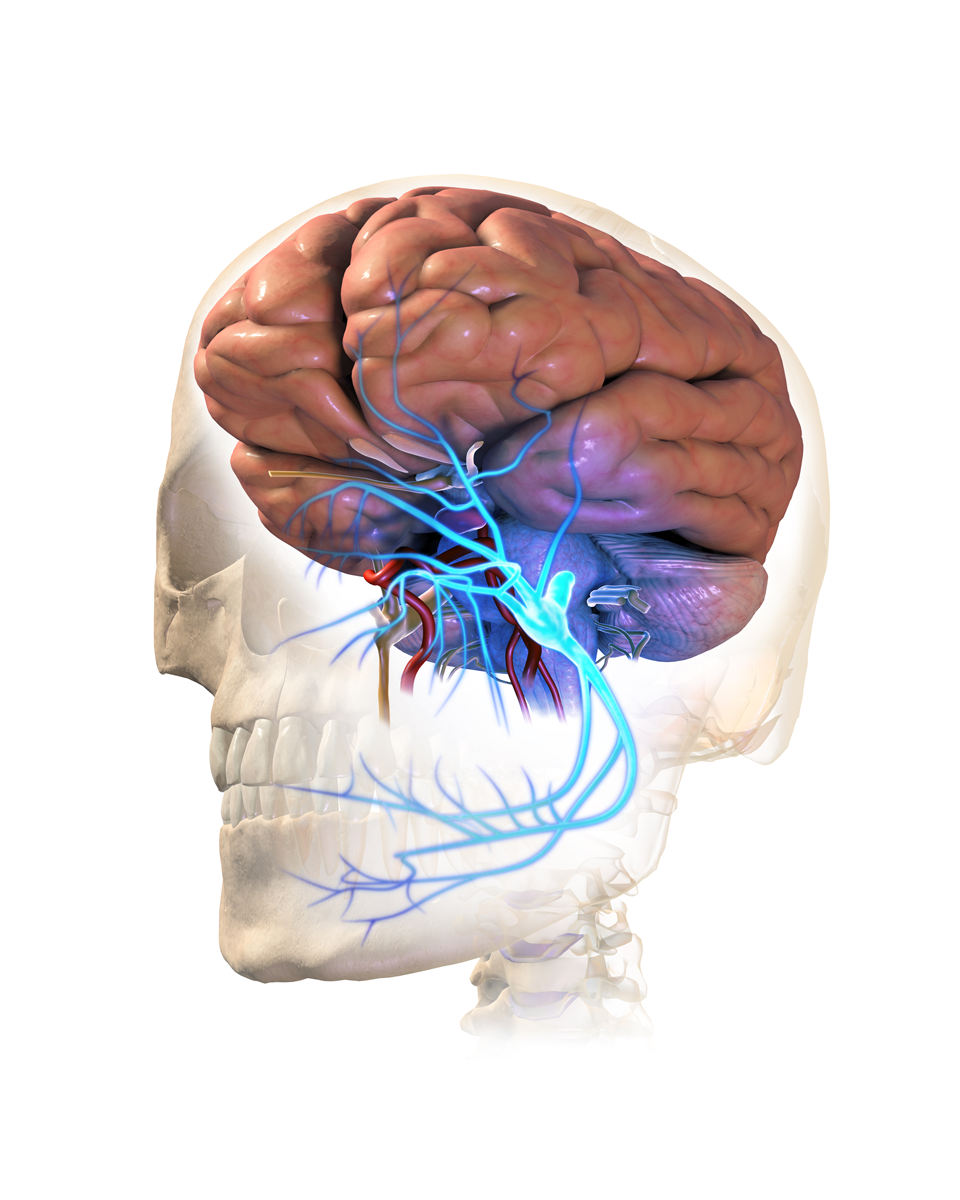
Many people, with multiple sclerosis (MS) suffer from lasting pain due to damage to the central sensory pathways caused by demystification processes in the body Flupirtine has emerged as a promising treatment for reducing the central nerve pain experienced by MS patients It is considered a preferable choice compared to tricyclic antidepressants or opioids due, to its non sleep inducing nature and a lower likelihood of causing cognitive side effects. Noted advantages consist of;
- Enhanced ratings, for pain levels, on number scales.
- Improved daily performance, with drowsiness.
- When disease-modifying treatments are used together they create effects.

Though there aren't controlled trials available to support this claim firmly yet its potential neuroprotective benefits could be especially valuable, for individuals dealing with advanced stages of multiple sclerosis (MS).
Patients, with cancer often experience pain conditions that encompass nociceptive, neuropathic nerve pain(nerve damage) and visceral (organ related) elements of discomfort. In hospice care environments¸ flupirtine has been creatively used alongside treatments, for individuals who cannot tolerate opioids or have liver issues. The advantages it brings in addressing pain related to oncology might encompass;
- Decrease, in the amount of opioids needed
- Enhanced patient comfort, for individuals experiencing nerve damage due, to chemotherapy.

- Improved patient adherence, as a result of dysfunction.
With its proven safety record when used for a duration of time flupirtine provides healthcare providers with an option to include in their comprehensive approach, to managing cancer pain.
Potential application in tinnitus and epilepsy (investigational)
Flupirtines distinct impact, on excitability has sparked research interest in the treatment of tinnitus and epilepsy conditions. In the case of tinnitus, a condition characterized by activity in the auditory pathways causing perception of phantom sounds. Flupirtine is believed to have the potential to reduce excessive neuronal activity. Initial research findings indicate relief, from symptoms through regulated dosage administration.

In cases of epilepsy involving seizures with cortical excitability flupirtines ability to stabilize membrane potential presents a potential mechanism, for antiepileptic action that is currently under speculation. Although it is not intended to replace existing anticonvulsants it could serve as an option, in instances where seizures are difficult to manage with standard treatments. More trials, in controlled settings are necessary to confirm this information; however; these examples showcase the potential of flupirtine, in neurotherapy.
Dosage and Administration Guidelines
Standard dosage for adults
The usual treatment plan, for using maleate in grown-up individuals commonly starts with taking 100 mg three to four times a day based on the seriousness and type of pain experienced by the patient. This dose intends to reach the level of the drug in the blood, for pain relief while ensuring that it is well tolerated by the individual. Patients are typically started on a dose to assess how they respond and tolerate the treatment well. This is particularly important, for those who have not previously taken opioids or are sensitive, to pain.
Maximum daily dose and treatment duration limits
To reduce the chances of liver damage from occurring by using a dose of 400 mg is advised for safety reasons and health considerations related to the liver function being taken into account with guidelines typically suggesting a treatment period not exceeding 14 days in a row due, to potential liver toxicity risks associated with prolonged usage which can lead to increased levels of liver enzymes and permanent harm to the liver. Before starting the treatment and at intervals, during the therapy course it is recommended to undergo liver function tests, in particular for patients who need to follow a full dosage regimen.
Titration strategies for chronic use
In situations involving the treatment of pain issues, with medication it is advisable to start with a low effective dose and slowly increase it while keeping a close eye on any signs of liver issues or the development of tolerance to the medication. It is generally not recommended to adjust the dosage for more than two weeks due, to the risk of liver damage accumulating over time. Patients need to be assessed to determine if flupirtine therapy is still beneficial and necessary.
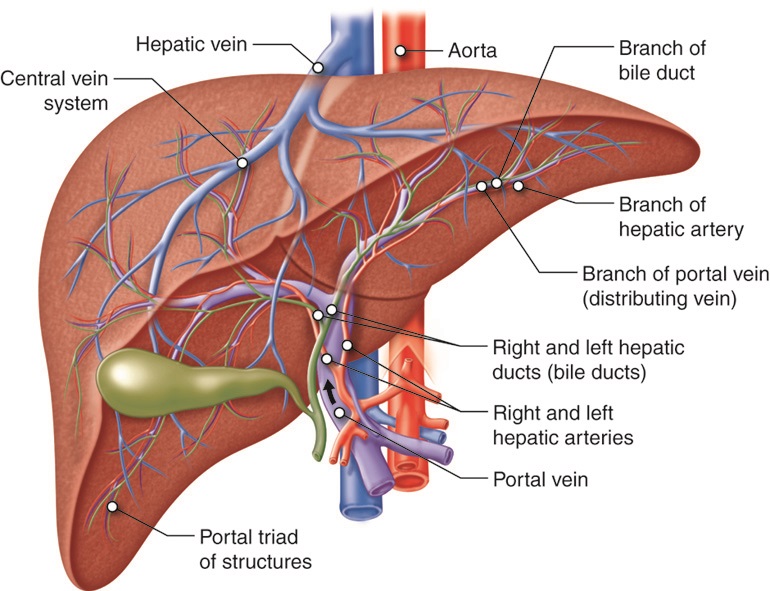
Administration route: oral tablets or capsules
Flupirtine is typically given orally in the form of film-coated tablets or capsules. Should be consumed with water after meals to reduce stomach-related issues. The medication works best when taken times a day to ensure levels, in the body and continuous pain relief throughout the day.
Dosage adjustment in special populations
Some groups of people may need dosage plans because of changes in how the drugs work in their bodies or their risk of experiencing negative reactions, such, as;
- Patients who are elderly and have a decline in liver function.
- People who already have liver conditions
- Renally compromised individuals undergo metabolism of flupirtine.
The dosage should be personalized according to the evaluation results and the monitoring of liver enzymes well, as how the patient feels and reports their outcomes.
Administration in Special Populations
Use in Elderly Patients
Pharmacokinetics in older adults
In older individuals, the way flupirtine is processed in the body might change because of liver function decline, lower levels of serum albumin and potential drug interactions, from taking medications. These alterations could lead to levels of the drug in the body and a longer time it stays active highlighting the need for monitoring, during treatment.
Dose adjustment recommendations
Start with a dose of 100 milligrams twice a day initially. Adjust as needed after assessing liver enzyme levels and how well its tolerated overall. Just make sure not to exceed 300 milligrams, per day unless necessary based on reasons and backed by lab results.
Monitoring requirements
It is important to conduct liver function tests before starting treatment. Regularly every 3 to 4 days thereafter to monitor for any signs of liver damage that may occur during the course of the therapy.
- Pale Yellow Skin Discoloration
- The urine appears darker, than usual.
- Feeling tired, with discomfort, in the side of the abdomen.
If liver enzyme levels surpass three times the limit of whats considered range, in your bloodwork results it is crucial to stop taking the medication.

Use During Pregnancy and Breastfeeding
Safety profile during pregnancy
The safety of flupirtine when used in pregnancy is not completely confirmed yet. It is categorized as a Pregnancy Category C substance. Should be avoided unless the expected advantages outweigh the risks to the developing baby. There are no controlled research studies involving women available currently. It is not typically advised to use flupirtine during pregnancy.
Animal study data and lack of human trials
Studies, on animal reproduction have shown that high doses can have effects on embryos such as deformities and delayed growth development in fetuses. As there is data available, on this matter as of now it is advised to avoid taking any risks and exclude it cautiously throughout all trimesters of pregnancy.
Breast milk excretion and lactation warnings
Flupirtine is believed to be passed through breast milk even though there is a lack of studies confirming this fact. Due, to its impact the system and uncertain effects it may have in newborns it is advised against breastfeeding while undergoing treatment. In cases where treatment cannot be avoided, exploring other feeding options is recommended.

Use in Pediatric Patients
Lack of approval in children
Flupirtine is not recommended for children as regulatory authorities discourage its use, in individuals, below 18 years old citing lack of safety data and increased chances of liver-related issues.
Safety concerns in adolescents
While older teenagers may seem similar, to adults in some ways body chemistry is still evolving during this stage of life.This can result in reactions to medications and a higher risk of liver damage. Although there have been mentions of off label use among teenagers no strong research studies have confirmed its safety or effectiveness, for this age group. Until more proof is available to support it the use of flupirtine, in children is not recommended.
Side Effects of Flugesic (Flupirtine)
Common Side Effects
Drowsiness and fatigue
Many patients commonly experience feelings of drowsiness and fatigue when taking Flugesic (flupirtine) which is known for its impact, in the system despite not being categorized as a sedative or hypnotic drug according to reports, from patients.
- Feeling like my thinking is a bit slower, than usual.
- Decreased focus and attention span may be more noticeable, during the stages of treatment.
- Feeling a bit drowsy. Still able to function during the day.
Exercise caution when using tools or engaging in activities that demand focus and alertness, at the start of the task.

Dizziness and headache
It's quite normal to experience to dizziness and headaches when starting treatment, at higher doses. These feelings might only last for a while. Depending upon the dosage used and usually goes away in a few days. Hydration and making adjustments, to the dosage could ease these side effects.
Nausea and gastrointestinal upset
People have experienced stomach issues like feeling sick and discomfort in the abdomen when taking flupirtine orally. Although it doesn't lead to stomach ulcers as NSAIDs do it can still result in; Upset Stomach Decrease in the desire to eat. Experiencing discomfort or sporadic bowel movements Make sure to eat something when you take the medication as it can help reduce those side effects.

Serious and Less Common Side Effects
Hepatotoxicity and liver enzyme elevation
The worrying side effect linked to flupirtine is its harm, to the liver. Extended use or high doses could cause an increase, in liver enzymes or cholestasis. In cases even result in severe liver failure. Signs that the liver might be affected include; Yellow discoloration of the skin and eyes often indicating a liver issue. The urine appears darker. The stools seem lighter, in color. Continual pain, in the part of the abdomen. It's crucial to check liver function when undergoing treatment for, than a week.
Allergic reactions and rash
In some individuals experiencing skin sensitivity with signs, like a rash with raised spots or itching sensation; in other cases, more severe allergic responses such, as swelling and sudden onset allergic shock reactions could also be observed. Patients should be told to stop the treatment and consult a doctor if they notice any signs of a widespread allergic reaction.

Muscle weakness and coordination issues
The muscle relaxant properties of Flupirtine can be helpful, in conditions involving muscle spasms. May occasionally result in increased muscle weakness or difficulties with motor coordination. This issue is especially significant for individuals or those, with conditions. Some reported symptoms include;
- Difficulty walking
- Struggling with hand movements.
- Proximal muscle fatigue
Consider lowering the dosage or stopping altogether if neuromuscular symptoms continue or affect your activities significantly.
Psychiatric effects (e.g., confusion)
Reports have mentioned occurrences of health issues like confusion or mood changes, in some individuals undergoing treatment; these effects are often temporary and can be linked to dosage or existing conditions affecting the central nervous system. It's suggested to keep an eye on any changes, in behavior when dealing with medications or combining them with drugs that affect the central nervous system.
Warnings and Precautions
Risk of liver damage with prolonged use
The risk of liver damage rises the longer the treatment goes on with Flupirtine medication should not be used for, more than 14 days in a row especially for patients, with existing liver issues or who are also taking other drugs that can harm the liver If any early signs of liver problems show up it is essential to stop taking the medication right way.
Recommended liver function monitoring
Liver enzyme tests. AST (aspartate aminotransferase) ALT (alanine aminotransferase) ALP (alkaline phosphatase) and bilirubin levels should be checked. Before starting the treatment. At least once, within a therapy session lasting longer, than a week. In case signs of liver issues appear suddenly Therapy should be stopped if the levels of transaminases go beyond three times the limit considered normal.
Avoidance of alcohol and other hepatotoxic substances
Patients need to be advised against drinking alcohol and using any substances that could harm the liver while undergoing flupirtine therapy like pain relievers such, as acetaminophen and herbal supplements recognized for their impact, on liver health. Combining these medications could potentially increase the risk of liver damage, over time.
Restriction to short-term use only
Considering the risks mentioned flupirtine is typically limited to short term use, in regulatory regions It is recommended for cases where other pain relievers are not helpful or not advisable and when brief treatment can adequately manage the pain at hand. Doctors should make sure to inform patients about how they should follow the treatment plan and stress the significance of sticking to the recommended guidelines.

Contraindications of Flugesic (Flupirtine)
Known hypersensitivity to Flupirtine or components
Flugesic (also known as maleate) should not be used by those who have shown hypersensitivity to either the medication itself or any of the ingredients, in its formulation because it could lead to allergic reactions such, as;
- Swelling of the blood vessels
- Urticaria, also known as hives is a skin condition characterized by itchy welts that appear on the skin, it can be triggered by factors such, as allergies, stress, or infections.
- Bronchopasm Difficulty breathing due, to constricted airways.
- In some instances anaphylaxis occurs uncommonly.
Before prescribing flupirtine it is important to assess patients who have experienced drug-induced reactions in the past.
Active liver disease or hepatic impairment
Due, to the way flupirtine is processed in the liver and its potential to cause liver damage it should not be used in patients, with liver problems or any level of liver dysfunction. Even minor liver issues could result in; The buildup of substances, in the body. Worsening of the underlying liver condition. Elevated levels of liver enzymes, before starting treatment should lead to a reassessment of treatment options.
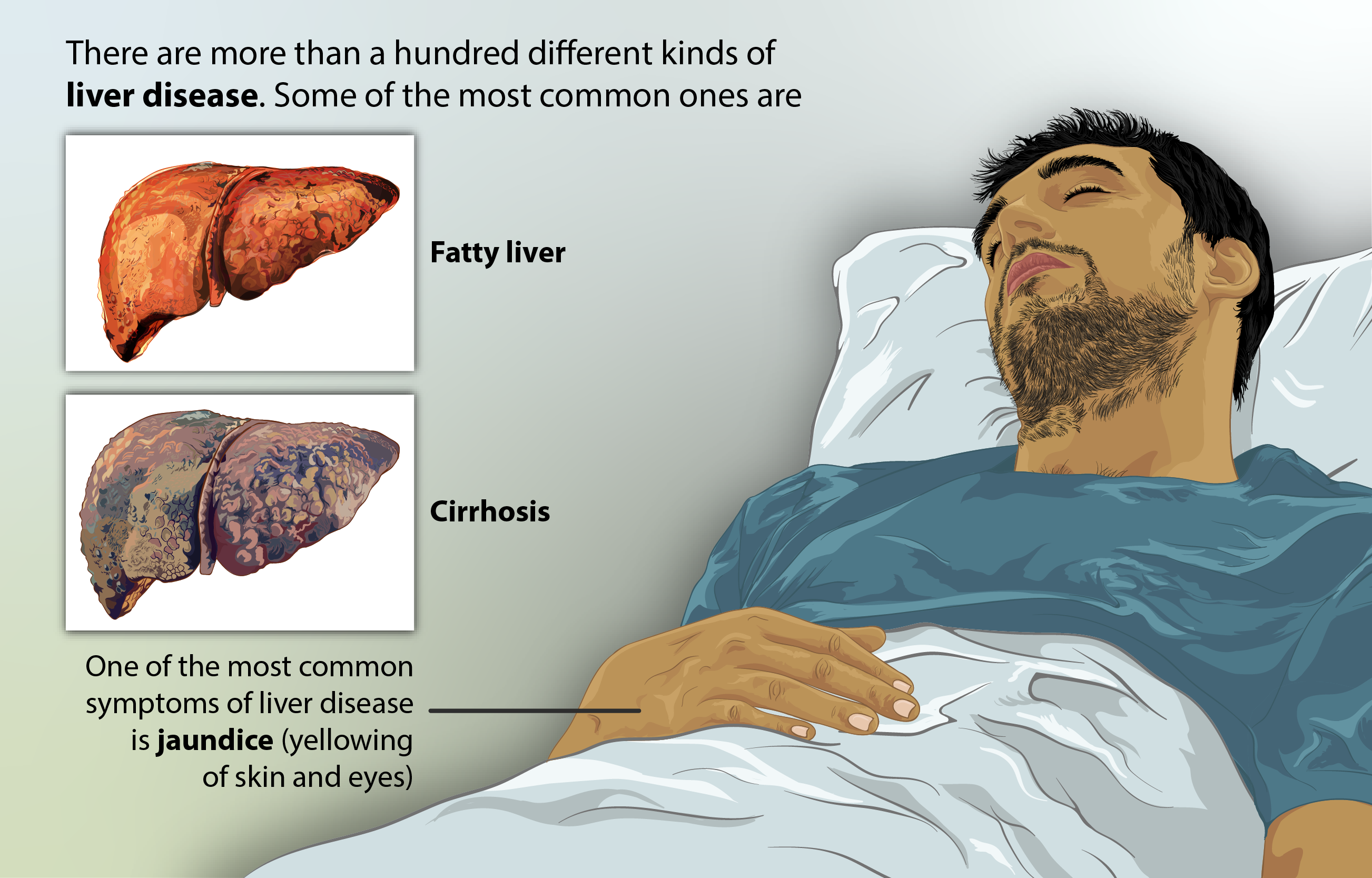
History of alcohol or drug abuse
Individuals who have a background of alcohol or substance abuse face a risk of liver damage. Should avoid using flupirtine as it is not recommended for them due, to potential harm to the liver caused by chronic alcohol consumption and interference with liver clearance processes. Moreovernervous system side effects could worsen instability in people, on substances concurrently.
Concurrent use of other hepatotoxic drugs
Avoid combining Flupirtine with any medications known to harm the liver. Examples include;
- High levels of acetaminophen dosage
- Amiodarone is a medication frequently used to treat heart rhythm disorders.
- Methotrexate is a medication commonly used in the treatment of hepatic conditions.
- Rifampin
The mixing of these elements greatly raises the chances of liver damage. Could result in severe liver failure if not dealt with quickly.
Drug Interactions with Flugesic
Interaction with central nervous system depressants
Flupirtines effects, on the system may be intensified when combined with medications that depress the central nervous system. This could lead to a heightened impact, on the body. Elevated drowsiness Delayed reaction time, in motor skills Elevated chance of experiencing decline The impact of these factors is especially worrying among individuals and individuals, in charge of operating equipment.

Potential effects with benzodiazepines and opioids
When benzodiazepines or opioids are used together they can cause effects, on the nervous system potentially leading to an increased risk of side effects and synergistic CN depression. Feeling sleepy and disoriented. Breath slowing down There is a risk of increased drowsiness, over time, with doses. If it is determined that co-administration is required for the treatment plan to be effective and safe, for the patients health needs and being considerations, in mind. it is important to monitor their progress under clinical observation and make any necessary dosage adjustments as needed throughout the course of their care.
Enzyme-inducing drugs and their impact on Flupirtine metabolism
Medications, like carbamazepine and phenobarbital speed up how the body processes flupirtine and lower its effectiveness in treating conditions to levels, in the bloodstream. Fine-tuning the dosage of flupirtine Continuous observation of pain management. Exploring pain relief approaches Approach mixtures cautiously and, with attention, to aspects.
Interference with liver function test readings
Flupirtine may lead to increases, in transaminases and bilirubin levels which can make it tricky for doctors to interpret liver function tests. The medical professionals need to be aware of the possibility of complications; Hepatic screening panels may sometimes show results. Comparing liver profiles that overlap with those of substances that can harm the liver. Before starting treatment it's important to have a record of the patients liver function levels, at the beginning.
Careful Administration and Monitoring
Liver function tests before and during treatment
Doctors typically advise keeping track of liver function before and, during Flupirtine treatment with check-ups recommended as part of the monitoring process. Alkaline phosphatase is an enzyme commonly found in the body. It plays a role, in biological processes. Direct bilirubin We should conduct some testing before embarking on therapy. Make sure to check in during the treatment preferably on day 7. As soon as any indications of liver damage appear.
Periodic reassessment of pain management needs
It's important to review the effectiveness and need for using flupirtine within a time frame to ensure responsible prescribing practices and minimize the risk of liver related issues by reevaluating pain relief periodically and exploring other pain medications, for prolonged treatment.
Avoiding prolonged therapy beyond recommended duration
Flupirtine should not be used for periods of time as it can greatly raise the risk of liver damage after 14 days, which goes against safety guidelines, from authorities worldwide. Doctors need to make sure patients understand the importance of following the recommended treatment duration and not extending it without authorization.
Caution in patients with pre-existing neurological disorders
Patients who have pre-existing disorders, like epilepsy, multiple sclerosis, or cognitive impairment might show increased reactivity, to the impacts of flupirtine. Possible negative outcomes could involve; The deterioration of neurological symptoms. Feeling puzzled or unsettled. Difficulties, with coordination. Shaking hands. Individuals, like that need to be watched. Any mental health symptoms should be addressed promptly with a gradual adjustment process.

Important Handling and Storage Precautions
Recommended storage temperature and conditions
It's important to keep Flugesic (flupirtine) in a dry place, at a consistent room temperature of 15°C to 25°C (59°F to 77°F). Extreme temperatures can affect the effectiveness of the medication so make sure to avoid storing it near sources of heat like radiators or in places where there are temperature fluctuations like, near windows or inside vehicles.
Protecting from light and moisture
Flupirtine tablets and capsules can be affected by exposure, to light and moisture leading to degradation of the drugs chemical composition. Ensure that you store the medication in its original blister packaging or a container that is not transparent. Remember to close the container after each time you use it. It's best to keep items, from bathrooms or moist areas. Poor storage conditions can speed up the process of oxidation and lower the effectiveness of medications.
Safe disposal of expired or unused medication
Unused or expired flupirtine should be properly discarded to avoid consumption or environmental harm. It is recommended to follow disposal methods such, as;
- Taking back any leftover medication to a program, for pharmaceutical disposal.
- Make sure to adhere to the disposal guidelines.
- Avoid flushing or pouring down drains.
- Before disposing of the packaging make sure to remove any identifying labels.
It's important to make sure that household members. Kids and pets. Don't get their hands on any leftover medication.
Overdose and Emergency Management
Symptoms of overdose (e.g., CNS depression, hepatotoxicity)
Taking flupirtine can lead to serious effects, on the central nervous system (such, as depression and acute liver damage) with symptoms that may appear as follows;
- Feeling drowsy.
- Feeling Dizzy or Disoriented.
- Feeling extremely lightheaded or passing out, ataxia.
- Difficulties, with coordination or lack of balance.
High levels of liver enzymes and yellowing of the skin Reports have shown instances of liver failure and coma occurring in cases of overdoses which require urgent medical attention.
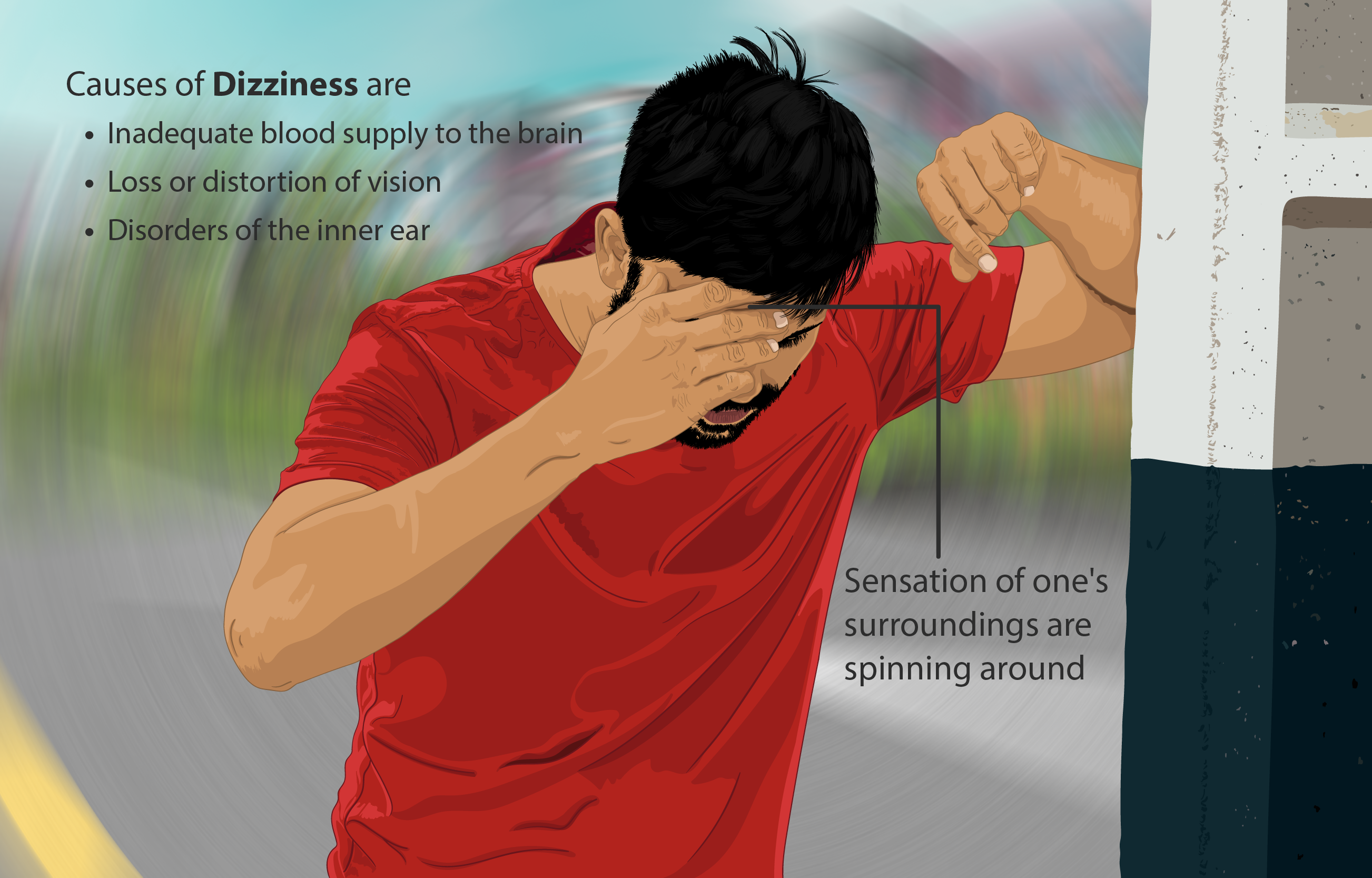
Emergency measures and supportive treatment
There isn't an antidote, for dealing with toxicity; the focus is mainly, on providing supportive and symptomatic care. Ensuring the airway is clear and stable while maintaining breathing and circulation. Keeping an eye on liver function and mental alertness. Administering fluids through an IV. Fixing any imbalances, in electrolytes. Patients, with liver or neurological symptoms might need to be hospitalized.
Role of activated charcoal or gastric lavage in acute overdose
If someone has recently taken something by mouth within 1 to 2 hours activated charcoal might be given to lower how much of it gets into the body system.The use of lavage could be thought about in ingestion cases but only when overseen by medical professionals and, with airway protection, in place. It's usually not an idea to induce vomiting because it can lead to inhaling the vomit and doesn't offer benefit after the initial stages of swallowing something harmful.
Patient Counseling and Education
Informing patients about possible side effects
Patients should receive information regarding the side effects of flupirtine therapy. Both the common and severe reactions should be discussed thoroughly during counseling sessions. Feeling sleepy or tired and experiencing dizziness are common but temporary. If you notice any indications of liver issues such, as a yellowing skin tone or dark urine coloration make sure to seek assistance. If you notice skin rashes or experience reactions it's best to stop using the product away.
Adherence to prescribed duration and dose
It's crucial for patients to strictly follow the recommended dosage and treatment duration as instructed. Make sure to follow your doctor's instructions when taking the medication. Be sure not to go over the recommended 14-day usage limit. Be sure not to take a dose if you miss taking a tablet. Failure to follow advice raises the chances of consequences and reduces the effectiveness of treatments.
Warning signs that require immediate medical attention
Patients need to be informed to seek help if they encounter any of the following symptoms; Feeling tired or weak for no reason Continuous feeling of queasiness or discomfort, in the abdomen. Urine that is dark, in color or stools that are the color of clay. Enlargement of the region such, as the cheeks or lips may occur. Detecting reactions early improves the outlook and reduces potential complications.

Advice on avoiding alcohol and self-medication
Patients undergoing flupirtine therapy should avoid consuming alcohol or any, over the counter substances that may harm the liver. They should receive counseling on this matter. Avoid drinking any alcohol. Steer clear of using acetaminophen or any other unmonitored medications. Ensure that all healthcare professionals are aware of their existing usage. Ensuring these safety measures is essential to protect liver function and avoid any drug complications.
Flugesic, Flupirtine FAQ
- What is Flupirtine Maleate?
- What is Flupirtine Maleate used for?
- What is Flupirtine P used for?
- What is Flupirtine?
- Flupirtine which class of drug?
- Flupirtine for migraine?
- Flupirtine for headache?
- Flupirtine used for?
- Flupirtine Maleate used for?
- Is Flupirtine banned in India?
- Is Flupirtine a muscle relaxant?
- Is Flupirtine a painkiller?
- Is Flupirtine safe?
- Is Flupirtine safe for kidneys?
- Flupirtine Maleate belongs to?
- Flupirtine with Paracetamol?
- Flupirtine and Paracetamol?
- Flupirtine and Paracetamol tablet uses?
- Flupirtine and Paracetamol tablet?
- Flupirtine and Thiocolchicoside?
- Flupirtine vs Tramadol?
- Flupirtine vs Aceclofenac?
- Flupirtine vs Etoricoxib?
- Flupirtine vs Tapentadol?
- Flupirtine Maleate vs Tramadol?
- Flupirtine and Paracetamol?
- Flupirtine and Thiocolchicoside?
- Is Flupirtine toxic to the liver?
- Is Flupirtine better than Tramadol?
What is Flupirtine Maleate?
Flupirtine Maleate is a type of pain reliever that works in the system without being an opioid and also has the ability to relax muscles and protect nerves from damage.
What is Flupirtine Maleate used for?
Flupirtine Maleate is commonly prescribed for both term and long term pain relief in conditions such, as musculoskeletal issues and post surgery discomfort or nerve related pain symptoms with occasional off label application, for tension headaches and fibromyalgia treatment.
What is Flupirtine P used for?
Flupirtine P usually denotes blends that mix Flupirtine, with Paracetamol for treating moderate to pain conditions along, with inflammation or fever.
What is Flupirtine?
Flupirtine is a type of pain reliever that doesn't belong to the opioid or steroid category and functions by regulating nerve activity, in the body. It provides pain relief as muscle relaxation and has some anti inflammatory properties but doesn't cause drowsiness or breathing problems, like opioids often do.
Flupirtine which class of drug?
Flupirtine is classified as a type of medication that selectively opens potassium channels and is commonly known as SNEPCOs It indirectly functions as an NMDA receptor antagonist.
Flupirtine for migraine?
Flupirtine has occasionally been prescribed for relieving migraines because of its pain relieving effects, on the brain; however it is not typically recommended as the initial treatment option for this condition and extended use is cautioned against due, to risks of liver damage.
Flupirtine for headache?
Flupirtine could be prescribed for tension type headaches or certain nerve related headache conditions; however; it is not advisable, for headache treatment because of safety issues.
Flupirtine used for?
Flupirtine is commonly prescribed to alleviate a range of pain issues such, as discomforts and backaches well as neuralgia and post surgery pains; it's also effective, for managing fibromyalgia symptoms thanks to its muscle relaxing qualities that help with myofascial pain.
Flupirtine Maleate used for?
Flupirtine Maleate is commonly prescribed to manage pain, in scenarios, like injuries and post-surgical pain well as certain types of neuropathic pain disorders when NSAIDs are not recommended for use.
Is Flupirtine banned in India?
Flupirtine got was prohibited in India in 2018 because of worries, about liver problems and an insufficient balance, between risks and benefits when taken for periods. However, it has since then been declared safe to use
Is Flupirtine a muscle relaxant?
Flupirtine exhibits muscle characteristics, within its mechanism of action; however it is not exclusively categorized as a muscle drug per se. It notably proves beneficial, in alleviating pain linked to muscle tension.
Is Flupirtine a painkiller?
Flupirtine is a type of pain medication that helps relieve pain by affecting potassium channels and indirectly influencing NMDA receptors.It works well for pain ranging from moderate to levels.
Is Flupirtine safe?
Flupirtine is deemed unsafe, for usage because it poses a risk of liver damage.It's use has been. Prohibited in nations like India and certain regions, in Europe.
Is Flupirtine safe for kidneys?
Flupirtine doesn't cause harm to the kidneys; however its recommended to be careful when using it in patients, with kidney issues and when taking medications that can affect kidney function.
Flupirtine Maleate belongs to?
Flupirtine Maleate is classified as a type of medication known as potassium channel openers (SNEPCOs) and also has properties that act as an NMDA antagonist.
Flupirtine with Paracetamol?
The mixture of Flupirtine and Paracetamol boosts pain relief and fever reduction making it effective, for treating moderate to pain with signs of inflammation.
Flupirtine and Paracetamol?
Flupirtine and Paracetamol are commonly mixed together in fixed dose forms to provide pain relief effects when taken together. However because of FLUPIRTINEs risks, for liver health these combinations have been. Not given approval, in several countries.
Flupirtine and Paracetamol tablet uses?
Flupirtine and paracetamol tablets are commonly prescribed to relieve moderate to pain such as muscle pain post-surgery and discomfort in the joints by offering combined pain relief with anti-inflammatory and fever-reducing properties.
Flupirtine and Paracetamol tablet?
Flupirtine and Paracetamol tablets are a blend of medicines designed to alleviate pain levels in individuals experiencing discomforts of such nature – FLUPIRTINE works at the center as a non-opioid pain reliever and Paracetamol provides antipyretic and analgesic properties.
Flupirtine and Thiocolchicoside?
Flupirtine and Thiocolchicoside are frequently recommended together to treat muscle spasms that cause pain in the body's muscles and skeleton system. Flupirtine primarily works as a pain reliever and muscle relaxant, in the system; whereas Thiocolchicoside acts as a muscle relaxant specifically for the skeletal muscles. This combination is quite effective, in addressing pain accompanied by spasticity symptoms.
Flupirtine vs Tramadol?
Flupirtine and Tramadol are both types of pain relievers that work in the system; however Tramadol is derived from opioids whereas FLUPIRTINE is not opioid based. Unlike Tramadol which can lead to suppression and dependence Flupirtine does not pose risks but has a higher likelihood of causing liver damage.
Flupirtine vs Aceclofenac?
Flupirtine works in the system to relieve pain and has protective effects, on the nerves; Aceclofenac is an anti inflammatory medication that targets peripheral pain receptors specifically for conditions, like arthritis and inflammation related pain.
Flupirtine vs Etoricoxib?
Flupirtine functions, as a pain reliever, without being an opioid and acts in the system; whereas Etoricoxib is a selective COC inhibitor used in treating inflamed pain specifically effectively.
Flupirtine vs Tapentadol?
Flupirtine is not an opioid. Doesn't have the addiction risk that Tapentadol does as an opioid painkiller option Tapentadol offers stronger pain relief but comes with a greater chance of dependency and drowsiness compared to FLUPIRTINE.
Flupirtine Maleate vs Tramadol?
Flupirtine Maleate provides muscle relaxation and pain relief without the side effects of opioids; on the other hand Tramadol is stronger. Can lead to drowsiness and nausea as well as addiction concerns.The decision depends on the level of pain and how well the patient can handle it.
Flupirtine and Paracetamol?
Flupirtine and Paracetamol are used together to relieve moderate to pain by targeting different pathways in the body; Flupirtine works on central pain signals while Paracetamol helps with peripheral pain and fever reduction, for a comprehensive relief approach.
Flupirtine and Thiocolchicoside?
Flupirtine and Thiocolchicoside are often recommended for treating muscle spasms or spinal issues that cause pain. This duo offers relief by easing muscle tension and providing pain relief while enhancing movement capabilities.
Is Flupirtine toxic to the liver?
Flupirtine poses a danger of liver damage when used for a long period of time and requires frequent monitoring of liver function throughout treatment due, to this issue leading to its prohibition or limitations, in various countries.
Is Flupirtine better than Tramadol?
When comparing Flupirtine and Tramadol for pain management in terms of safety regarding dependency and respiratory impact concerns are factors to consider. The decision on which to use depends on the situation treatment duration and individual patient risk profiles.

















